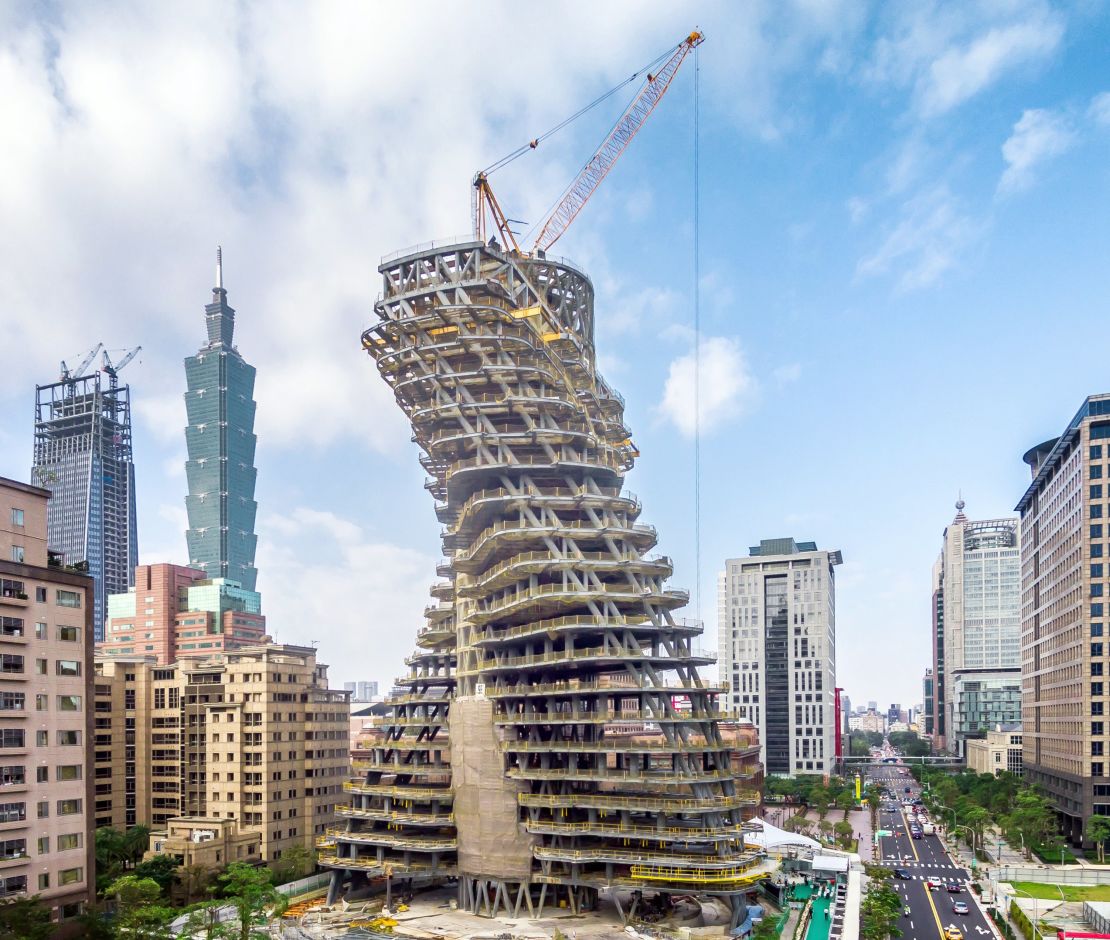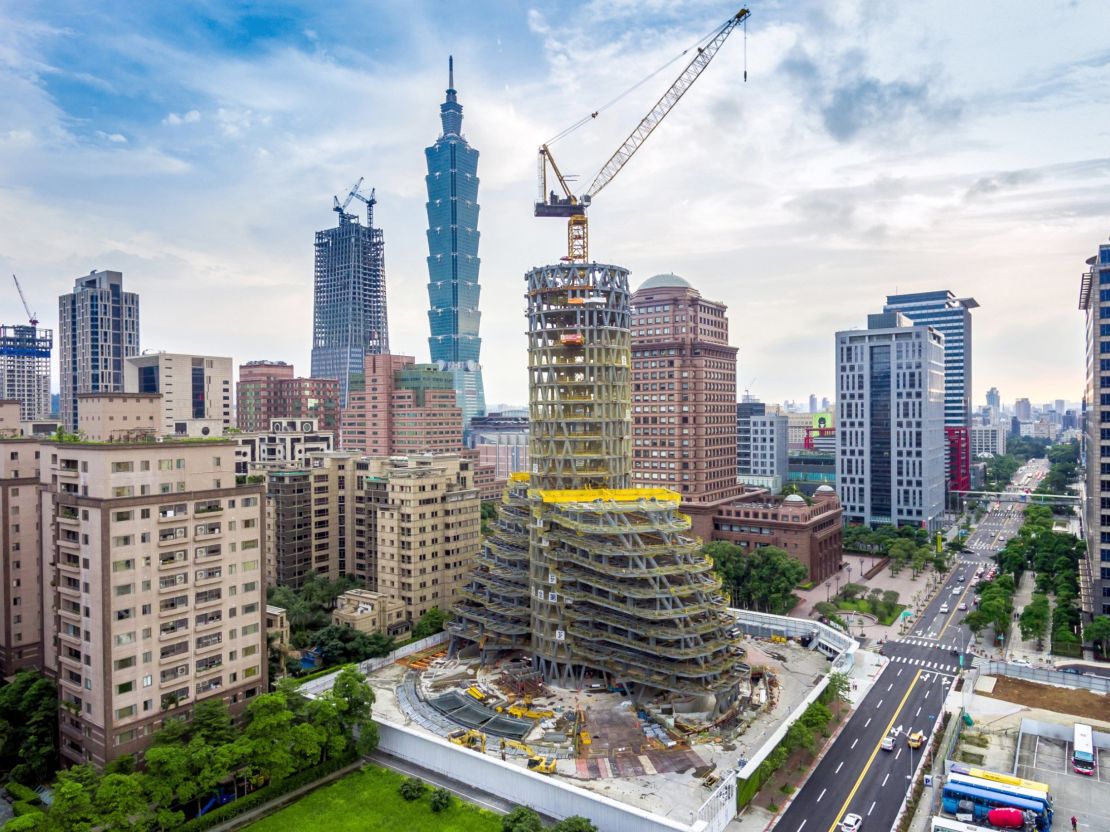Paris-based architect Vincent Callebaut wants his buildings to be more than your average tower block. His vision is ambitious: create an energy-saving, carbon-absorbing civilization to fight global warming.
“I want to give hope for a better tomorrow,” he says.
One of his eco-friendly ideas is taking root right now in Taipei, Taiwan’s capital city. When Tao Zhu Yin Yuan – meaning “The Retreat of Tao Zhu” – is completed later this year, the residential complex will be covered in 23,000 trees and shrubs.
While Callebaut likens the building to an urban forest, its appearance is actually modeled after a strand of DNA – a double helix twisting 90-degrees from base to top.
If all goes to plan, Callebaut says the plants will absorb 130 tons of carbon dioxide (CO2) emissions each year – the equivalent of around 27 cars.

Taiwan as a whole produced more than 250 million tons of CO2 in 2014, according to the International Energy Agency. Callebaut admits it is a small step, but insists it’s “a big leap [against] global warming.”
“The tower presents a pioneer concept of sustainable residential eco-construction that aims at limiting the ecological footprint of its inhabitants,” Callebaut explains.
The 21-story apartment complex builds in ways for residents to reduce their energy consumption. The design utilizes natural lighting and ventilation. It also includes rainwater recycling and rooftop solar panels.
Callebaut has been behind several notable eco-concepts over the years, from a floating garden designed to clean European rivers to underwater skyscrapers created from ocean garbage. He has planned a 132-story urban farm for New York City, and an ambitious project to transform Paris from the City of Light into a green smart city by 2050.
“Outlandish and futuristic as [they] may seem,” Callebaut says, “the core of all my designs is an attempt to address the real threat that cities pose for humankind and our ecological balance.”
The self-described “archibiotect” discusses his work with CNN Style below.
CNN: What inspired the design of Tao Zhu Yin Yuan?
Vincent Callebaut: The project is a perfect fusion of Western and Oriental technology and culture. The tower is directly inspired by the double-helix structure of DNA, the source of life and the symbol of harmony, and reflects upon the idea of ultimate balance.
New year, new buildings: 2017's most anticipated openings
There are a number of notable vertical gardens in Asia, such as Seoul’s “Green Wall” and “Skygarden.” Is this a bigger trend?
In 2050, we will be 9 million human beings on our blue planet, and 80% of the world population will live in megacities. It’s time to take action against climate change, to invent new eco-responsible lifestyles and to incorporate nature into our cities.
It’s not a trend. It’s a necessity!
You call yourself an “archibiotect.” What does that mean to you?
Archibiotect is the new transdisciplinary approach invented by myself in 2008.
(Archibiotect is a word combining the prefixes of the words architecture + biotechnologies + technologies of information and communication.)
Whereas the primary reason of architecture has been to protect man against nature, the contemporary city strives to reconcile human beings and their natural ecosystems. The garden is no more placed side-by-side to the building; it is the building! The architecture becomes cultivable, edible and sustainable.

What do you hope people learn from your concepts?
To think “outside of the box,” to shake up the old structures. To make society evolve is the most difficult thing to do in this world…but it is possible step by step.
I hope people learn that it is possible to reduce energy consumption and greenhouse gas emissions. The planet is in a state of decline and there haven’t been enough proactive initiatives taken in saving Mother Earth.
Responses have been edited for length and clarity.
































































